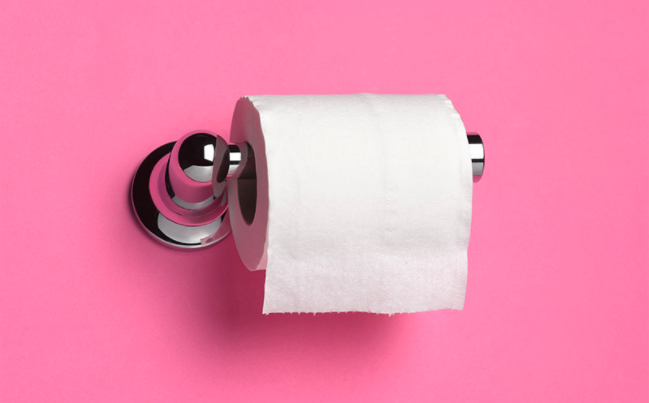
Color
Of course, poop should be brown, but a dark brown shade is ideal. You might notice some variations in color; for example, Dr. Berookim fields a lot of questions around green-tinted poop. But that’s within the normal color range and is the result of diet, meaning it should be temporary. Colors that aren’t normal are black (and that does mean black, not just very dark brown) and red. “Bright red could be hemorrhoids; it could be inflammation in the end of the large intestine, the colon,” Dr. Berookim says, “Whereas black tarry stool is more something going on in the stomach, in the beginning of the small intestine.” Clay-colored also is a shade of concern, which can indicate an issue with the liver, gallbladder, or pancreas.
Texture
“You don’t want it to be firm and hard; you don’t want it to be loose,” Dr. Berookim says. But again, depending on your diet and lifestyle, you might find your stools to be harder or softer on different days. If you’re constantly drinking fluids, you’ll have softer and looser bowel movements, while constipation can lead to harder stools. Constipation culprits include loading up on carbs, a sedentary lifestyle (time to get outside!), and not sufficiently hydrating. As a general rule of thumb, Dr. Berookim recommends drinking an ounce of fluid for every kilogram of your body weight.
In terms of textures you don’t want to see, tarry stools, mucus in the stool, and oily or fatty poop all aren’t good. Black, tarry stools can be a sign of bleeding in the stomach (it’ll likely be accompanied by a foul smell), while mucus could be a sign of inflammation in the intestines. (It’s similar to how you produce a lot of mucus when you have a sinus infection, Dr. Berookim says.) Meanwhile, oily poop could be an issue with the pancreas, which is responsible for digesting fat.
Shape
“You want to have a log-appearing stool that’s soft,” Dr. Berookim says. Small, hard pellets are a sign of constipation (you may notice you have to strain to push them out), while super-soft, unformed stool could be the result of diarrhea, which you can get from travel, catching your pets’ infections, intolerance to foods, and some medications and supplements. One shape Dr. Berookim looks out for is a thin, pencil-shaped log. “There’s a concern that there may be some sort of obstruction like a tumor that’s causing blockage that’s making the stools thin.”
Frequency
Once or twice a day is considered standard, although it’s okay to go more often or less frequently if that’s normal for you. “I tell my patients, as long as you’re going to the bathroom, you’re not straining, you’re having a soft bowel movement, and you feel like you’re evacuating completely, I’m okay if they’re going every other day,” Dr. Berookim says.
Ultimately, it’s more about your medical history and symptoms than the volume. Dr. Berookim looks for red flags, like black or red blood in the stool, unintentional weight loss, abdominal pain, or anemia. “If they don’t have any of that, it’s less of a concern.” Again, if anything seems off or different, your doctor can help diagnose what’s going on.


